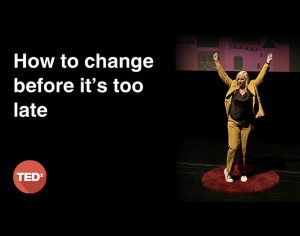Richard Glynn is on a mission to give business what hedeems ‘the Holy Trinity’; staff who feel good about themselves, the knock-onsocietal and familial benefits, and an increase in profits. It’s only throughinvestment in wellbeing that he believes this can truly be achieved.
Move over Ethan Hunt; I’m on a mission. A mission to find the Holy Grail. Or more accurately, the Holy Trinity.
But I’m not talking in religious terms. I’m referring to the Holy Trinity of business; staff who feel great about themselves, the ensuing familial and societal benefits and optimised productivity, which leads to increased profits.
History puts the search for the Holy Grail back almost a thousand years. And while my own quest isn’t quite that long in the tooth, it’s still a couple of hundred years in the making.
In the 19th Century, names like John Cadbury, Andrew Carnegie, Solomon Guggenheim and Titus Salt were hailed as generous philanthropists as well as captains of industry. The reason for this is that they created not just extreme wealth, but also long-lasting social purpose legacies. They realised that if you invest in your workforce, whether it’s making chocolate or milling textiles, you invest in society. Giving employees basic social amenities like housing, sanitation, schooling ‘ the Cadburys built an entire village (Bourneville) to alleviate cramped living conditions for their employees and pioneered pension schemes and a full staff medical service ‘ even manicures and pedicures, made them feel better about themselves.
The results? Increased loyalty (of staff and consumers), increased longevity and productivity, and increased profits. The staff had no reason to go to another job, didn’t get sick as often, and worked harder because they were more focused, while consumers engaged with, even revered the brand.
Thus, profit-making machines were inextricably linked to social purpose investment. The investment directly in the wellbeing of their workers and indirectly into society, saw the birth of the concept of philanthrocapitalism.
Unfortunately, the benevolent side of this equation was lost as the profit motive came to the fore. Businessmen lost that connection with their audience ‘ with staff and consumers ‘ and the profit-making machine took over. We created businesses that consumers now call ‘inauthentic’ or ‘unsustainable’ and employees feel are ‘uncaring’.
The irony is that nowadays it’s far easier for businesses to engage with their staff and customers, through a myriad of digital platforms. But where businesses are falling short is in the cyclical process of data capture. They need data to understand the needs of their workforce and consumers. But without a real culture of investment into the wellbeing of their people, the recipients simply don’t trust the motives of the company and are understandably reticent to release their data.
The key to unlocking this symbiosis is philanthrocapitalism. But how does business reinvent this for the modern age? Call it ‘PC 2.0’ if you will.
My personal journey into investing in wellbeing came through receiving an academic scholarship through education. This meant that somebody had made a donation to allow kids with talent ‘ but not necessarily the financial means ‘ to attend the school. Someone somewhere was investing in the kids and their futures.
This progressed to mental wellbeing when I spent time at Great Ormond Street Hospital. I was the Government’s section 11 Trustee at the GOSH Children’s Charity for ten years and was lucky enough to witness the work of the hospital’s consultants, who were true experts. They invested in the mental wellbeing of the children, their parents, the junior doctors and of the nursing staff because they knew that if the mental wellbeing of the kids was looked after as well as their physical needs, they got better quicker. That meant more beds available and more kids getting treatment.
Transferring this into the world of business, it’s times like the current situation ‘ when the country is deep in the throes of a divisive global pandemic ‘ that breed isolation and anxiety, that highlight the need for investment into the mental wellbeing of society.
But wellbeing investment is more than simple gestures like putting apples on reception. That might exhibit a genuine cultural imperative but may be of minimal use if the company does not have the relevant data. Do they know who eats the apples? Who benefits and in what way? Is it only the healthy people who take them? Is it just the millennials? Does it make others feel even worse? Indeed, is there a wellbeing benefit at all? Does an apple a day really keep the doctor away, i.e. does apple eating correlate with reduced absenteeism? Does it improve retention, does it attract younger talent? Does it increase turnover? Rarely do businesses know because there is no data.
That’s why my mission is to get businesses to understand that wellbeing investment must become an agreement between a company and its core assets; its employees. It’s an agreement that states openly that we the business will give you something in return for the one critical element that we need to run our business; your data. We will do it in a way that is destigmatising and preserves your confidentiality. We will do it in a way that accepts that with the insight derived from employee (and indeed consumer) data, we will know how and where to invest most effectively.
Much like the Cadburys of this world, businesses that invest in the proactive wellbeing of their people will see enhanced returns through optimised productivity, reduced absenteeism and higher staff retention rates. These companies are in turn able to make a more genuine connection to society through greater advocacy and better engagement.
The data insight is the key. It helps employees understand their own mental wellbeing and allows companies to measure the progress being made towards developing a sustainable culture of wellbeing.
That’s my vision for 87%, the digital mental wellbeing platform I set-up to give individuals the data they need to build resilient mental wellbeing and businesses the data they need to monitor how their workforce is feeling and thereby provide the tools to direct appropriate interventions at the right time.
Employers who realise the importance of supporting their staff ‘ which should of course be all companies ‘ will be able to see and benchmark how their business is doing and receive advice on what actions to take. Staff receive clarity and direction in tracking their mental health and coaching on how to build healthy habits, resilience and stronger mental wellbeing.
Over the last few months 87% has walked the walk. Through the understanding of its shareholders and foundations such as the Aviva Foundation, it been incredibly busy supporting, free of charge, those who need wellbeing monitoring the most, namely emergency medical workers and companies struggling to cope with the demands of a radically changed business environment.
Championing a culture of wellbeing takes us closer to the Holy Trinity that the titans of industry of 200 years ago realised. Investing in and looking after your core assets, be they your employees, clients, customers ‘ or in the case of GOSH, children ‘ makes them feel better about themselves. They live in a stronger familial and societal unit, and the result is a more engaged and more present workforce, and optimised productivity. That’s ‘PC 2.0’ for the 2020s. In this case I fervently believe that by remembering the past, we may be forced to repeat it.
“
Share via:


















































